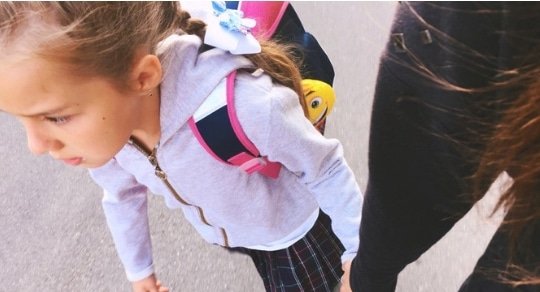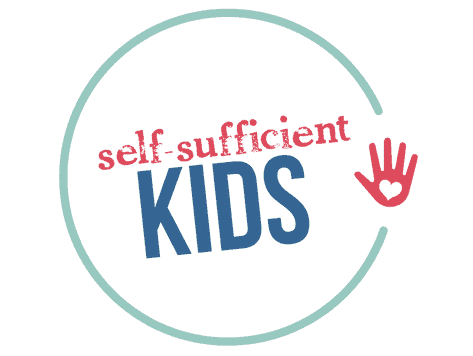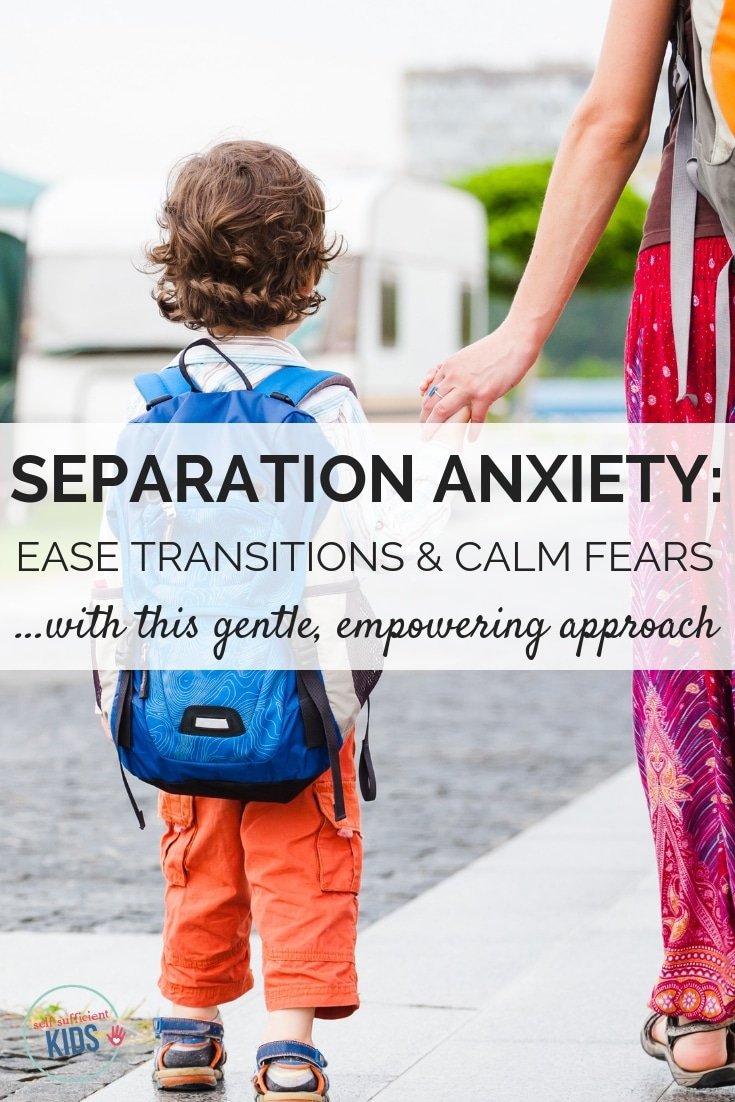A Gentle, Empowering Approach to Handling Children’s Separation Anxiety
Separation anxiety in children can be a heart-wrenching challenge for parents. Here’s how to handle your child’s anxiety in a positive, caring way.

Drop-off time at my daughter’s classroom is currently so stressful.
It’s full of tears and sobbing. Often she needs to be peeled from my legs before I can leave the classroom. Once I’m able to get away, I’ll glance back to see her arms outstretched to me while she sobs “Mommy” into the air between us.
By the third week of school, my daughter’s classmates begin their school day with barely a glance back at their parents. But my girl is still crying, still clinging, and still struggling. All I can think is: “What am I doing wrong that everyone else is doing right?”
It’s heart-wrenching and exhausting for both of us – an unsettling way to start the day. I find myself becoming frustrated with her clinginess and drama, especially as I watch her new friends ask her for hugs as we step into the classroom every morning.
It’s clear that part of her is enjoying this new school experience and the little people she is building friendships with. So why can’t she just let go of the drama and be okay with it?
I know it’s not that easy for her 4-year-old mind, and my frustration is immediately taken over by guilt.
Mom guilt can be a sneaky thing, the way it creeps into parenting situations that are less than perfect. Even a normally rational person can be tricked by the ruthlessness of guilt, as it snakes through the mind until it successfully tricks you into believing that your child’s struggle is somehow a reflection of your parenting.
Know that separation anxiety in children is normal
If you have a child who is also struggling at separation times, remind yourself that separation anxiety is, in fact, a normal part of development and indicates at certain ages that development is progressing as it should.
Children thrive on routine and as our children grow older, it becomes more likely that the routines our children are familiar with will have to change. Daycares change, families move, siblings are born, and even if those can stay consistent, eventually our children begin school.
For some children, change may be something they experience more consistently (think of military families or those growing up in blended families) and therefore have had to develop positive coping strategies at very young ages. For others, preschool or kindergarten may be the first big change of their little lives.
No two children (even siblings) are going to handle change or anxiety at separation in the same way. If you take nothing else from reading this, I hope you take this: do not compare your little one to other children. The strengths and struggles of our children are all unique and different.
Learn how to empower children faced with separation anxiety
We all know there are things we can do to help our kids adjust to change. Such as how it’s important to talk to our kids about upcoming changes and to visit the new daycare or school as much as possible. Or how it’s essential to make sure our children have enough sleep or to keep their routines outside of school as normal and consistent as possible.
While those tips are handy, let’s be honest – most of us already understand and implement these strategies. But what about when we do everything we can to ready our children and the result still leaves us prying freakishly strong little arms from our limbs?
How do we get away from worrying about what we did wrong and instead focus on empowering our children to manage separation anxiety? After all, isn’t this parenting thing all about teaching our kids the skills they’ll need to cope with life and the changes that inevitably come with it?
These three simple tips can empower our kids during emotional transition times:
1. Make a plan for drop off and stick to it:
While drop-offs may be a stressful time for both child and parent, they can be a little less stressful when met with some consistency and routine – particularly when it’s a routine that’s developed together.
Talk to your child about a goodbye ritual that may help them feel more at ease or give them some comfort at separation time. This may include a special wave or handshake or allowing your child to pick a special transitional object (such as a small photo or, like my daughter, a small bracelet she wore every day).
Once the routine is agreed on, carried out, and it’s time to leave… leave! It can be tempting to stick around with the hope that your child will stop crying and suddenly be okay with your departure.
The reality is that long, drawn-out goodbyes increase anxiety for our children. By the age of three, most children understand the effect their pleas at separation can have on our actions. Sticking around or returning to the room when our children are upset will only increase the probability that it will continue in the future.
2. Communicate (and tag-team!) with your child’s teacher:
It can be challenging to physically peel an upset and irrational preschooler from your leg for long enough to get out the door. In moments of distress, our babies become part superhuman, part octopus.
A successful exit without a huge physical struggle is often only possible when a teacher is willing to gently assist. It’s important to have a discussion with your child’s teacher to let them know you need the help and how you would like them to help.
It’s also important to let your child know that you have asked the teacher for help. For example, you could say:
- “It would make me happy if you would sit in your chair when it’s time for me to leave. If you aren’t able to do that, then I may need to have your teacher hold your hand while I leave the room.”
- “I’m going to ask your teacher to walk you to your seat while I leave.”
Communication with your child’s teacher is also essential in understanding the success of the overall school day. A child who has a rough drop-off, but quickly gets himself together and goes through the rest of the day engaged and happy, means that something is working – even if it doesn’t appear like that during the short moments we observe. On the flip side, if a child is showing struggles throughout the day, parents and teachers may need to work together to brainstorm other strategies.
3. Investigate the root of anxiety and address that separate from the drop-off:
If a child is demonstrating signs of anxiety that extend past drop-off, it may be helpful to assess the root of the anxiety. Is it only the separation that causes worry or are there other factors that may be playing into it? Having a discussion with your child’s teacher will likely help to provide insight into triggers that result in behaviors throughout the day.
My daughter has had speech services since she was 18 months-old. While she has made huge progress since then, she still meets with a speech-language pathologist once a week to work on articulation. My daughter is very aware when she is not saying something correctly or when someone cannot understand what she is saying. While this does not deter her from trying at home, it does result in hesitation at school and adds to her shy personality.
Anxiety that stems from speech delays, cognitive delays, learning disabilities, or even shyness can translate into separation anxiety, as well as to manifest itself in other behaviors (for example, refusal to complete work, refusal to follow directions, or even more severe and disruptive behaviors).
Remember: a child’s behavior is communication
One of the keys to helping your child through transitions is to figure out just what it is they are communicating with their behavior.
1. Talk to them:
So how do we figure out what our children are communicating? By talking to them – just the same as we would if they were adults.
It may be helpful when talking to your child to focus on identifying the different ways drop-off has happened (both positive and negative) and then brainstorm together positive ways that it could play out in the future.
This is an amazing opportunity to teach our kids that we can only control our own actions and that certain actions may make us feel better or worse.
Presenting actions as choices also gives a better sense of control back to your child – which is important during a period in which they may be feeling some big or scary emotions.
2. Be okay with crying:
Despite all our efforts, drop-off may still be met with tears or shouts for us to stay.
Keep in mind that just like adults, the release of tears and venting can be helpful in letting out frustration and finding renewed energy to accept challenges.
While it’s hard for us to watch, it’s likely harder for us than it is for our child. Most children will quickly move on to having fun, while we are left with the image of their tears to ride out the day.
Instead of focusing on how you want your child to feel, direct conversation with your preschooler to how they can act. For my daughter, we talked about how it was okay to feel sad and it was okay to cry, but staying in her seat when it was time to say goodbye would help her feel better more quickly than clinging to my leg.
It’s important to let our children know that emotions are not good or bad, they are just emotions.
You Know Your Child Best
While separation anxiety is a normal part of development for all children, there are many factors that can play into how much of a struggle your child may have.
The goal in empowering our children should never be to eliminate the anxiety they feel, but rather to help them develop skills to manage it in more positive ways.
If you have concerns that your child’s anxiety is spilling into their ability to progress, learn, and develop, do not be afraid to reach out for help. Teachers, pediatricians, and even your village of fellow parents may be able to offer suggestions or resources that make a world of difference.
Just remember that when all is said and done, you know your child better than anyone else and that makes you the most qualified to empower your child in all their strengths and struggles!

A behavior specialist by profession, Leah Porritt finds passion in assisting parents with exploring creative ways to support children with behavioral, cognitive, physical, and medical challenges. Leah enjoys finding the humor in parenting and sharing it on her blog Out of The Nutshell. Leah has been published on Scary Mommy, Huffington Post, A Fine Parent, and is a content contributor for Moms Beyond. Leah lives in the Baltimore, MD area with her husband and three children.

